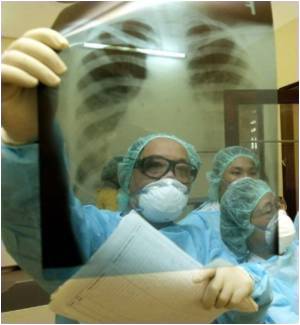
"An unresolved question in the field of lung transplantation is how the size of the donor lungs relative to the recipient affects transplant success," he explains. "It is commonly believed that transplanting oversized lungs is problematic, but no data were available to substantiate that idea."
The pTLC ratio is calculated using height and gender. Taller people have bigger lungs and a man's lungs are larger than a woman's of the same height. The pTLC-ratio is determined by dividing the donor's pTLC by the patient's pTLC. A ratio of 1.0 is a perfect size match, whereas for example a ratio of 1.3 indicates that the donor lung is significantly larger than the patient's lung.
Eberlein and colleagues used data from the United Network for Organ Sharing (UNOS) lung transplant registry for all adult patients (aged 18 years and older) who underwent first-time lung transplantation between May 2005 and April 2010. Of the 6,997 patients included in the study, 4,520 underwent bilateral lung transplant and 2,477 underwent single lung transplant.
For patients undergoing a double-lung transplant, the team found that each 0.1 increase in the predicted total lung capacity (pTLC) ratio was associated with a 7 percent decrease in risk of death a year after the procedure. This decrease was still independently associated with improved survival following additional adjustment to account for any bias to oversizing. For those receiving one lung, each 0.1 increase in pTLC-ratio was associated with a 6 percent decrease in the risk of death a year later; however, this association was not present following the same additional adjustment to account for any bias to oversizing.
"This study shows that lung size matters in lung-transplant procedures," says Eberlein, lead author of the study published Aug. 1 in the journal The Annals of Thoracic Surgery. "We found that oversized allografts, up to a point, were associated with improved survival after lung transplantation. We would hope that recipients, within surgically feasible limits, could be listed for higher donor height ranges and ultimately have a better chance of receiving an acceptable donor lung."
Advertisement
Source-Eurekalert









